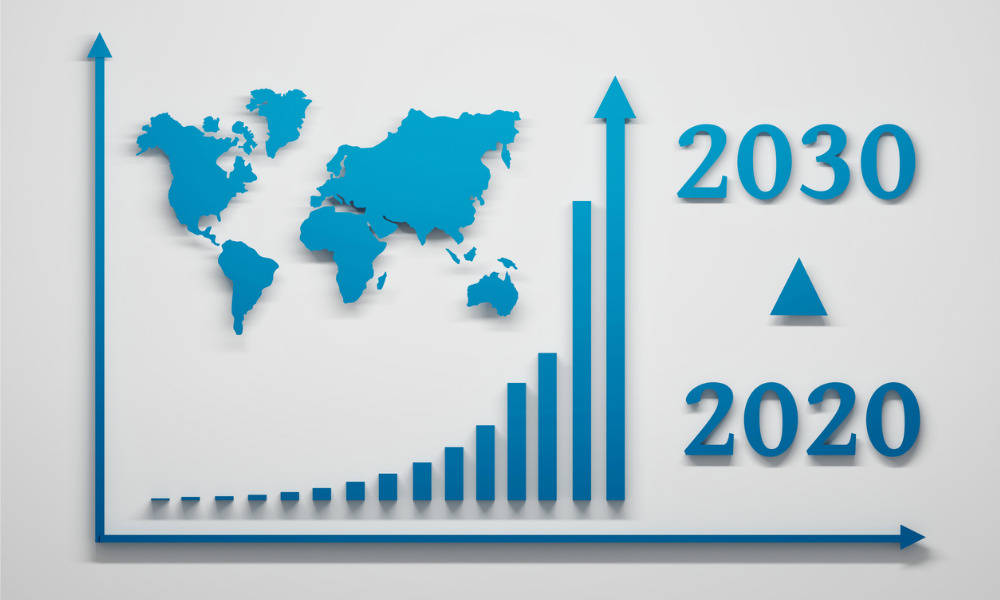Investor acceptance and new bond ETF applications are fuelling a 23% annual growth rate according to BlackRock

BlackRock expects global bond ETF assets under management (AUM) will triple to US$5 trillion by 2030, despite the most difficult fixed-income market in decades.
The early days of the pandemic saw considerable market volatility, which only added to bond ETFs' adaptability. As a result, during the last two years, more wealth managers have prioritized bond ETFs in their portfolios, and institutional bond ETF adoption has grown.
“Bond ETFs have revolutionized fixed income investing as they provide instant access at transparent prices to hundreds of bond market exposures in ways that are accessible to all investors,” said Salim Ramji, Global Head of ETF and Index Investments at BlackRock.
“Bond ETFs have grown by proving to be useful and resilient investment tools during various market conditions including near-zero interest rates, pandemic-related market stresses and inflationary pressures. Bond ETFs have overcome many tests, and they have become the catalyst of a more modern, more digital and more transparent bond market,” Ramji added.
Bond ETFs were created by BlackRock 20 years ago, and what began as four products has grown to a $1.7 trillion sector with over 1,400 products. Despite this expansion, bond ETFs account for only 2% of the US$124-trillion fixed income asset class.
Carolyn Weinberg, Global Head of Product for ETF and Index Investments, said, “The global bond ETF industry is growing faster than we expected, propelled by self-reinforcing and enduring adoption trends from our clients during the pandemic era.”
“We believe that the next wave of growth is just beginning. While much of this growth will come from increased adoption of existing products, we are excited for the innovations that incorporate more active management – which we believe will grow five times to $1 trillion in assets by 2030,” Weinberg went on to say.
BlackRock's new paper, “All systems go”, identifies four themes that will help drive greater bond ETF acceptance. These include insights on trading dynamics, ETF usage patterns, market structure evolution, and new investment concept implementation tactics.
- Building blocks in evolved 60/40 portfolios: Bond ETFs now have 24% in the fund industry, up from 14% five years ago. That’s happening as more investors mix bond ETFs with active strategies, shifting from one type of fixed income exposure to another and, in the process, reframing the traditional 60/40 portfolio and bond construction.
- Tools for seeking active returns: Institutional investors, ranging from pension funds to active managers, are among the earliest users of bond ETFs, using them to adjust portfolios to changing market circumstances, price individual bonds and portfolios, minimize transaction costs, manage liquidity, and hedge risk.
- Increasingly precise sources of potential returns: Since 2015, the number of bond ETFs available to trade has doubled, as the industry has expanded investor options from broad market sectors to more tailored exposures by region, credit risk, or maturity, as well as advanced methods incorporating active management. By 2030, BlackRock expects the next generation of more active bond ETFs to have a market capitalization of US$1 trillion, up from around US$200 billion now.
- Catalysts for modernizing bond markets: The initial wave of bond ETF adoption was triggered by market structure changes during the global financial crisis of 2008-2009. Since then, bond ETFs and its ecosystem have aided in the advancement of electronic trading and algorithmic pricing of individual bonds, boosting transparency and liquidity in the underlying bond markets.
At the end of March 2022, electronic trading volumes in US investment grade bonds amounted for 36% of overall traded volumes for those bonds, up from 21% in early 2019.



